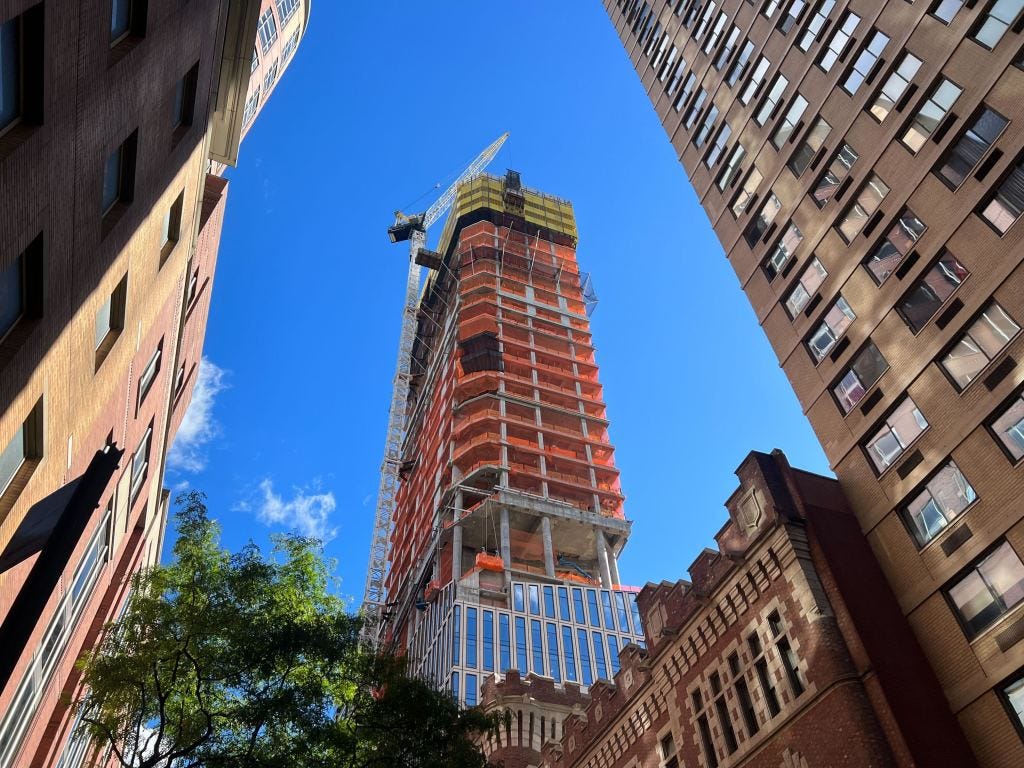NYC's Housing Crisis: What Moves Can a Mayor Make?
Some tools and tactics Mayoral candidates have discussed for fixing housing

New York City has a generational housing crisis. Everyone knows this. And since there is a mayoral race going on, fixing housing is a top talking point. Some candidates are rolling out big plans. If you’re paying close attention to the race, you might even know their general housing strategies.
But tactically, how do the candidates actually plan on enacting these strategies? To unpack that a bit, last week Open New York hosted a workshop on housing policy tactics. You can think of these tools as menu options for enacting a housing strategy. And as one workshop host pointed out, these tactics will probably outlive any individual campaign.
So think of this more like a quick tour of the different moves a mayor could make on housing. It's not everything and definitely not exhaustive -- just some ideas to chew on. And it’s worth mentioning some obvious pro-housing tactics like zoning reform or raising FAR were not mentioned by many candidates. But hearing about the tactics the candidates do discuss may help you appreciate the diversity of actions a mayor could take, no matter who in particular is in charge.
Where to build new housing
Golf courses: New York City has 12 public golf courses (news to me!) and Brad Lander has proposed building housing on 4 of the courses, although he hasn’t specified which ones. That said, some people in our workshop were skeptical that these golf courses are close enough to public transit to really make sense for large developments.
Empty lots in Manhattan: Why not build on the lots that are sitting empty or not being used well? According to Scott Stringer, there are over 170+ “vacant lots” in Manhattan. Looking at the cited sources, “vacant” may be an exaggeration, although the Manhattan Borough President did find over 170 locations for new housing in the borough a couple years ago.
Financing public construction
Union Pension funds: To pay for new affordable housing, some suggest using big pools of money, like union pension funds. Scott Stringer did this when he was Comptroller, working with groups like the Community Preservation Corporation. The idea is that this money can subsidize construction while still (hopefully) being a safe investment for workers' retirements. I’d like to learn more about the risks and rewards, though.
Raising corporate taxes: Another way to get cash for housing is to ask the state to raise certain taxes. The corporate tax is controlled by the state, but Zohran Mamdani has suggested raising New York’s rate to match New Jersey’s in order to finance policy ideas like public housing. However, Governor Kathy Hochul doesn’t seem receptive to the idea and the state controls corporate tax revenues.
Subsidizing construction of middle-income housing
Mitchell-Llama 2.0: What about people who make too much to qualify for public housing but not enough for most apartments? The old Mitchell-Lama program built a lot of housing (over 100,000 apartments in 269 developments), but the last development from that program dates back to 1981. Some candidates, like Scott Stringer and Michael Blake, have said we need a "Mitchell-Lama 2.0."
Funding housing
NYCHA partnering with private management: NYCHA developments sorely need reinvestment. One idea is Permanent Affordability Commitment Together (PACT). This program lets private companies manage NYCHA buildings and use federal Section 8 money, a more robust funding source, to pay for upgrades. Candidates like Michael Blake say PACT needs to be more open, while Adrienne Adams supports buildings in PACT but worries about too much privatization. The big debate is: can private involvement fix buildings without tenants losing out?
Preserving housing
Get Tough on Bad Landlords (Even Seize Buildings): To save affordable apartments from landlords who let them fall apart, some say the city needs to get tougher. This could mean strict fines or even the city taking over buildings from "slumlords." Scott Stringer talked about this, even using eminent domain (where the city can take private property for public use – states and cities can do this too!). It's a big step, like a "nuclear option," because it's complicated and a lot of work for the city. But some see it as a muscular way to preserve housing.
Edgy ideas to increase supply
Legalizing basement units: One way to get more housing is to make existing illegal units, like many basement apartments, legal and safe. State Senator Jessica Ramos supports this idea. But it's tricky. People at the workshop were skeptical. After 11 people died in basement apartments during Hurricane Ida flooding in 2021, safety is a huge worry.
Where can I learn more?
These ideas pop up in different campaign plans and policy papers. Who's running now or what's trendy today will change, but these plans can still show you where some of these ideas came from. Some are super long (Brad Lander’s plan feels like a small book), others are just a few bullet points (like Jessica Ramos’s). Here’s a list from the event agenda:
Andrew Cuomo: Addressing NY’s Housing Crisis
Zellnor Myrie: Rebuild NYC
Brad Lander: State of Emergency
Zohran Mamdani: Freeze the Rent
Adrienne Adams: No plan yet (Current Homelessness Plan)
Scott Stringer: Building the Next Generation of Affordable Housing
Jessica Ramos: Affordable Housing
Whitney Tilson: Addressing Housing Affordability
Michael Blake: Welcome Home Agenda
Curtis Sliwa: No 2025 plan yet
Eric Adams: No 2025 plan yet
2021 plans: Affordable Housing, Reimagine Our City, Save NYCHA



